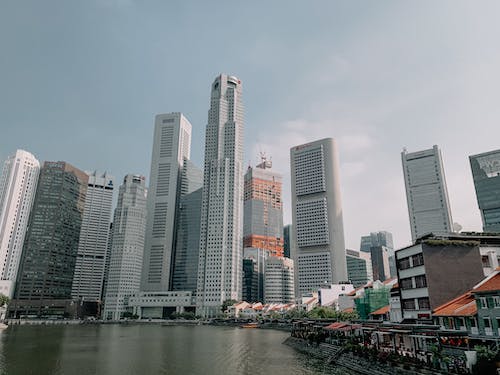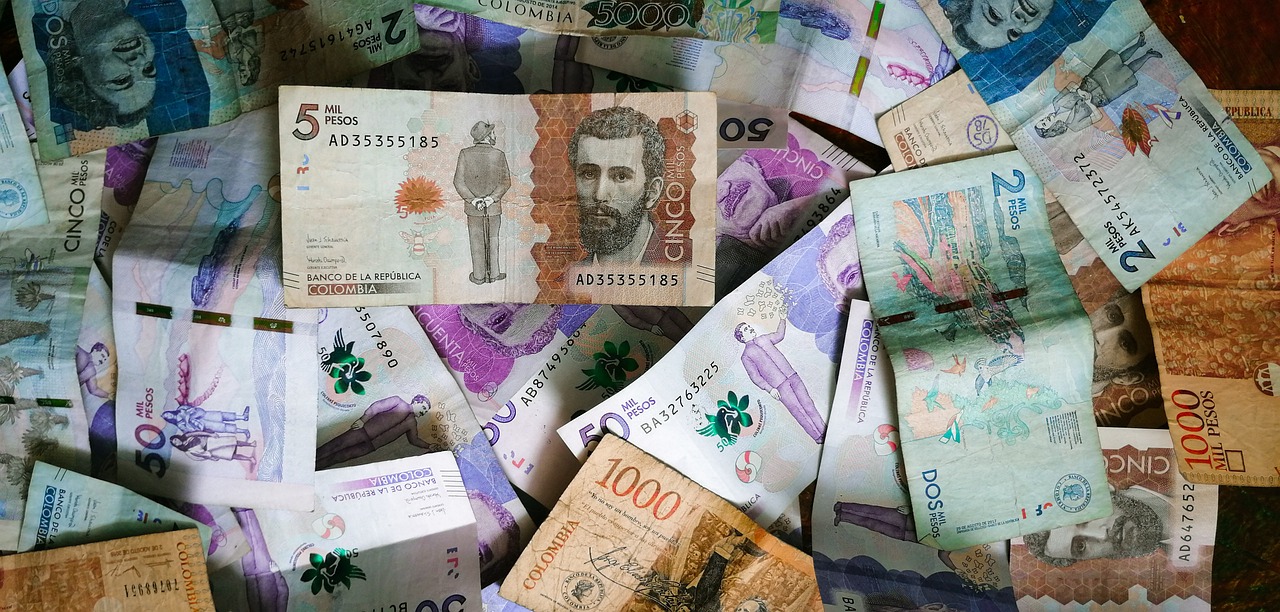Cost of Living in Singapore: The Latest Guide for 2024
Jennifer Johnson - 2024-01-24 14:05:39.0 1059

Singapore, a modern city-state, is known for its high quality of life and corresponding living costs. As 2024 approaches, both expatriates planning to move to Singapore and tourists interested in this multicultural hub are curious about the cost of living in Singapore. This article delves into the various living expenses in Singapore, including accommodation, dining, transportation, and entertainment, providing a comprehensive analysis of the cost of living.


Housing Costs
Understanding Singapore's five regions is crucial as they geographically influence your daily budget. These five regions are Central, North, East, Northeast, and West, divided into 28 districts through the old postal code system.
| Housing Type | Price (Approx. per month/SGD) |
|---|---|
| Downtown Apartment (One Bedroom) | 3,800 |
| Apartment Outside of Center (One Bedroom) | 2,700 |
| Downtown Apartment (Three Bedrooms) | 7,500 |
| Apartment Outside of Center (Three Bedrooms) | 5,500 |
Central Region - Most Expensive: The Central Region covers districts 1 to 15, including City Hall, Marina Area, CBD, and district 21 (Central West). Rent prices are high as you are close to major shopping centers and international schools.
Districts 1 to 10 are the most expensive areas to live in, including communities in the Central Business District. Popular areas include Holland Village, Orchard Road, Marina Bay, and Tanjong Pagar, bustling with businesses, allowing residents to walk to and from work. Short taxi rides are sufficient if the weather is too hot.
In the core central region of Singapore, rental prices for housing are generally expensive. The monthly rent for a single-room apartment is about 18 to 20 SGD per square foot (1 SGD is approximately 5 RMB), while double rooms are relatively more expensive, with monthly rents of about 24 to 28 SGD per square foot. If you want to rent a whole apartment or a townhouse, you'll need to pay about 30 to 40 SGD per square foot per month.
Northern Region - Most Affordable: The Northern Region of Singapore is the least populated and mostly undeveloped. It's close to the causeway connecting Singapore and Malaysia. The North Region's MRT lines strategically connect it to the city center.
The famous area in the North Region is Woodlands, home to the country's largest international school, attracting many expatriates looking to move to Singapore.
Northeast Region: The Northeast Region covers districts 19, 28, and 20 (Ang Mo Kio). Young couples favor this area as the government invests in developing residential areas to attract families.
East Region: The East Region, near Changi Airport, includes districts 16 (Upper East Coast), 17 (Far East), and 18 (Tampines). It's a rapidly developing business hub with international restaurants from different countries and access to outdoor activities and parks.
West Region: The West Region of Singapore might be the most populated as it's an industrial area. Many offices are located here, leading to the development of many residential areas to reduce commuting for work. The districts found here are 22, 23, and 24.
Electricity, Water, and Gas: Your monthly electricity, water, and gas bills range from 200 to 600 SGD, depending on the use of air conditioning. However, this depends on the property. If your property has a natural gas supply, your monthly bill might be significantly lower.


Dining Costs
Singapore offers a diverse selection of dining options, from street food to upscale restaurants. According to Numbeo, a meal at an average restaurant costs about 15 SGD, while a meal for two at a mid-range restaurant costs about 100 SGD.
| Item | Price (SGD) |
|---|---|
| McMeal at McDonald's | 10.00 |
| Domestic Beer (1 pint draught) | 10.00 |
| Imported Beer (12 oz small bottle) | 12.00 |
| Cappuccino (regular) | 6.40 |
| Coke/Pepsi (12 oz small bottle) | 2.10 |
| Water (12 oz small bottle) | 1.51 |
| Milk (regular), (1 gallon) | 15.25 |
| Loaf of Fresh White Bread (1 lb) | 2.58 |
| Rice (white), (1 lb) | 1.51 |
| Eggs (regular) (12) | 4.30 |
| Local Cheese (1 lb) | 10.89 |
| Chicken Fillets (1 lb) | 5.97 |
| Beef Round (1 lb) (or Equivalent Back Leg Red Meat) | 12.35 |
| Apples (1 lb) | 2.52 |
| Banana (1 lb) | 1.87 |
| Oranges (1 lb) | 2.35 |
| Tomato (1 lb) | 1.71 |
| Potato (1 lb) | 1.34 |
| Onion (1 lb) | 1.39 |
| Lettuce (1 head) | 2.56 |


Transportation Costs
As a highly developed city-state, Singapore boasts a world-class public transportation system. Transportation costs not only affect the daily lives of residents but are also an important factor for foreigners considering relocation or tourism. Here's a detailed analysis of transportation costs in Singapore:
-
Public Transportation: Singapore's public transportation system is known for its efficiency, punctuality, and cleanliness. The system mainly includes the Mass Rapid Transit (MRT) and public buses.
- MRT: Singapore's MRT network covers the city's main areas and is one of the fastest ways to travel. MRT fares vary based on the journey's distance, ranging from SGD $0.80 to SGD $2.50.
- Public Buses: Public bus services cover every corner of Singapore, providing seamless connections with MRT stations. Bus fares are also calculated based on the journey's distance, generally ranging from SGD $0.80 to SGD $2.00.
-
Taxis: Taxis in Singapore are a relatively expensive mode of transportation but offer more convenience and comfort. The starting fare for taxis is usually between SGD $3.00 and SGD $5.00, with additional charges based on the distance and time traveled, about 1 SGD per kilometer.
-
Private Cars: The cost of owning a private car in Singapore is very high. This includes not only the cost of purchasing a car but also high registration fees, insurance costs, and fuel expenses. Additionally, the Singapore government implements a Vehicle Quota System (COE) to control the number of vehicles, significantly increasing the cost of owning a car.
-
Shared Transportation Services: In recent years, shared bicycles and electric scooters have become increasingly popular in Singapore, offering another convenient and economical mode of transportation. Users can rent these shared transportation tools through mobile apps and pay based on usage time. Additionally, there are shared car services like BlueSG, offering electric car rentals charged by the minute.
- Shared Bicycles and Electric Scooters: The cost of using these shared services usually includes a base fee (about SGD $1.00) plus a per-minute usage fee (about SGD $0.15 to SGD $0.35).
- Shared Cars: Shared car services like BlueSG typically have a fee structure that includes a membership fee and a per-minute usage fee. For instance, the usage fee might range from SGD $0.33 to SGD $0.50 per minute.
-
Transportation Cards: Residents and tourists in Singapore commonly use EZ-Link cards or NETS FlashPay cards to pay for public transportation. These rechargeable cards offer a convenient riding experience and discounts for multiple rides.


Medical Costs
Singapore is known to have one of the best healthcare systems in Asia. The World Health Organization also ranks the country's healthcare system as the sixth strongest in the world. Their healthcare system boasts the most advanced medical technology and cost-effective, high-success-rate medical solutions. Their healthcare system strictly follows government-regulated guidelines for excellence, transparency, cleanliness, and safety.
However, the downside is that the government does not mandate employers to provide insurance for Singaporean employees. Therefore, employers in Singapore do not offer health insurance benefits. So, if your compensation does not include medical insurance, this might be a minor issue for you. But don't worry, even without insurance, medical costs are not entirely unreasonable.
- General Practitioner Average Consultation Fee: 40 SGD
- Blood Tests and X-rays: Cost you 50 SGD, up to 80 SGD
- Specialist Consultation Fees: Between 75 and 125 SGD per consultation
- Ward Charges for Non-air-conditioned Wards in Hospitals: As low as 30 SGD
- Private Restrooms: At least 3,000 SGD
As we near the end of our understanding of the cost of living in Singapore, it's clear that this vibrant city-state offers a diverse and efficient living environment for both residents and tourists. Whether you are a professional about to relocate to Singapore or an adventurer planning to visit, Singapore's unique charm and high-quality life will undoubtedly leave a profound impression on you.
After understanding the cost of living in Singapore, whether you plan to relocate or live temporarily, it's crucial to plan your finances wisely. Here, international remittance becomes an indispensable link. PandaRemit offers fast, secure international remittance services, helping you manage your financial needs in Singapore with ease. Whether it's paying rent, transferring money to family, or handling daily expenses, PandaRemit provides convenient solutions. For more information, please visit the official PandaRemit website.
PandaRemit, the choice of millions of users worldwide! Offering safer, more convenient, more reliable, and more affordable cross-border remittance services.
Now covering over 50 countries/regions and remittances between dozens of currencies, PandaRemit supports over 500 banks as well as major mainstream wallets like Alipay, WeChat, and PayPal.
PandaRemit can meet your various remittance needs, including global remittances, large-sum remittances, RMB outward remittances, and tuition payments for studying abroad.
We offer the industry's best exchange rates and lowest fees, ensuring the security of your funds, certified by PCI DSS. With a global presence and regulatory compliance, you can enjoy a convenient service experience 24/7 during the remittance process.
Visit the PandaRemit official website/APP to enjoy a new experience in global remittances. Receive more, faster.
This publication is provided for general information purposes only and is not intended to cover every aspect of the topics with which it deals. It is not intended to amount to advice on which you should rely. You must obtain professional or specialist advice before taking, or refraining from, any action on the basis of the content in this publication. The information in this publication does not constitute legal, tax or other professional advice from WOTRANSFER PTE. LTD. or its affiliates. Prior results do not guarantee a similar outcome. We make no representations, warranties or guarantees, whether express or implied, that the content in the publication is accurate, complete or up to date.



